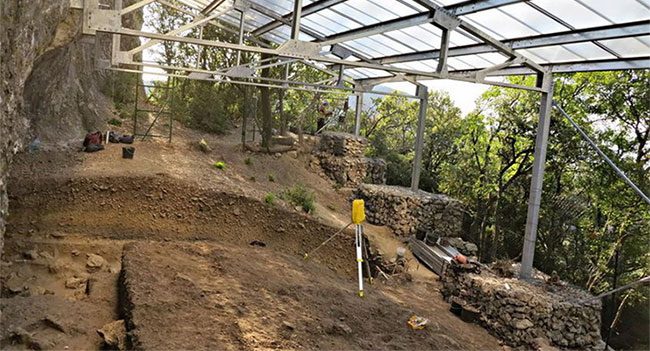A cave in southern France has revealed evidence that modern humans first used bows and arrows in Europe around 54,000 years ago, significantly earlier than previously known.
The evidence found in a cave in southern France indicates that the first bows and arrows were utilized by modern humans in Europe 54,000 years ago, much earlier than previously reported.

Archaeological excavation at the entrance of the Grotte Mandrin cave in southern France. (Source: AFP).
The results of this study were published in the journal Science Advances on February 22.
This new research is based on evidence discovered at Grotte Mandrin, located in southern France. This area was first excavated in 1990 and contains multiple layers of archaeological remains dating back over 80,000 years.
According to researchers, both Neanderthals and their “cousins,” Homo sapiens, once inhabited this cave.
The authors noted that a layer referred to as “Layer E” indicates the presence of Homo sapiens approximately 54,000 years ago, interspersed with layers showing significant Neanderthal traces.
Previously, the oldest evidence found in peat bogs in Northern Europe, particularly at Stellmoor in Germany, suggested that modern humans in Europe used bows and arrows from 10,000 to 12,000 years ago.
In the new study, the research team analyzed the functionality of stone tools found in Layer E.
The results showed that these tools were crafted more intricately than artifacts found in the layers above and below. The stone arrowheads are particularly important since other components of the bows and arrows, such as wood, leather, resin, and sinew, are easily damaged and difficult to preserve in areas that experienced the Paleolithic era of Europe.


















































